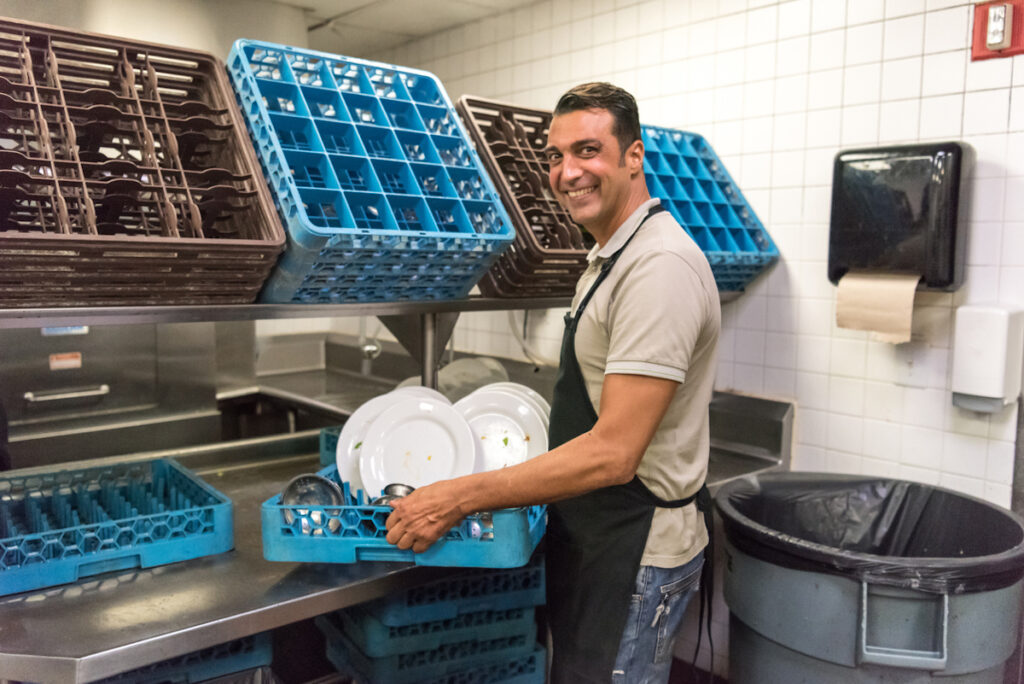While most in the restaurant industry agree that minimum wage increases are coming, it’s not clear whether it’s a positive or negative development. According to the U.S. Bureau of Labor Statistics, 11% of the people employed in hospitality and leisure earn the federal minimum wage or less. Higher take-home pay means more cash in employees’ pockets, but a sharp increase in labor costs could put a restaurant chain on shaky operational ground.
However, restaurants routinely face similar challenges, such as changing costs of supplies or new safety regulations. Successful enterprises find ways to adjust. When labor costs spike, they buffer the impact by increasing the productivity and efficiency of every employee’s working hours.
Uncover Time and Money Wasters with Digital Field Audits
To increase productivity and root out inefficiencies, restaurants rely on field audits. These reviews, conducted by District Managers (DMs) in many cases, assess how each location is operating and helps to identify areas which could function more economically.
Despite this, many companies still use paper forms and checklists for their audits. DMs take notes by hand then transcribe the collected information into spreadsheets. The tedious process soaks up a healthy share of their time, and it’s easy to make mistakes or forget crucial details when translating from paper to spreadsheets. That’s why restaurants who are serious about improving productivity need a digital field audit solution.
A digital field audit system makes it easier to collect and compile the data that will reveal ways to cut costs and decrease waste. DM’s enter information directly into the system, including simple yes/no answers with varying weights, temperatures and even service times. They can easily add photos as well, which increases the detail and accuracy of the report.
Once the data is collected, the results are broadcasted immediately to leaders and stakeholders, so they have a real-time assessment of performance. Data is aggregated with field audits from other locations and displayed in a dashboard that illustrates trends and areas for improvement. Data is also stored in a searchable database so leaders can compare changes over time for a single location, a region or the whole chain.

Use Reliable Audit Data to Increase Efficiency
Digital solutions help leadership collect better information about how each restaurant is performing, but the real savings come when they use that data to implement more efficient processes and dial up their productivity. Unfortunately, many restaurants have a hard time following up on issues found during audits, but using digital audit applications can make it simple to identify and implement improvements right away.
Act on individual problems fast.
When DMs spot deficiencies, they can be addressed by creating Action Plans in the audit software. For example, if an audit reveals poor stock management that’s causing excess waste, the DM spells out how employees can change work habits, processes or reporting to reduce losses.
The action plan also specifies the employees responsible for making it happen, a due date for completion and a provision for assessing how well the changes are working. Follow up is immediate and effective.
Act on trends across the company.
Audit data from across multiple locations, compiled together on a dashboard, also helps management find ways to improve productivity across the company. They don’t have to rely on anecdotal evidence or gut instinct to set direction. They can share data with location managers and even front-line workers to explain how changes will help everyone do their jobs better and improve the company’s overall health.
Cover the legal bases.
With historical audit data, businesses can avoid the costs of legal services or fines resulting from compliance issues. It takes less time to conduct audits with a digital application so it’s easy to conduct more assessments, ensuring every location is covered. And if occupational or food safety requirements change, managers can update the audit forms and push them to the field instantly.

Motivate more productive employees.
The transparency and detail of audit data also helps employees see the positive results of their efforts. The positive feedback encourages them to become more productive. They take part in helping the company do better, which improves motivation and engagement. Leadership can even set incentives for workers to hit audit score targets and enjoy the rewards.
Train more effectively.
Aggregate audit data exposes areas that need improvement, which trainers can use when updating their programs. They can develop classes that emphasize the skills and techniques proven to maximize productivity. And if on-going audits reveal weak spots, refresher courses will address these weaknesses to get the team back on track. DMs might even assign training as part of their action plans.
Keep experienced people.
Restaurants facing wage increases can respond by keeping their quality staff members and paying them higher wages which will result in lower employee turnover. Recruiting, hiring and training new people costs money, and the team loses overall productivity when an experienced employee walks out the door.
Involving workers in the efforts to improve productivity will increase their engagement and loyalty to the company, especially if new processes, based on insights from audits, help make their lives easier.
Effective training also helps retain good people. When they have the right skills, team members do their jobs better and feel better about their work. According to LinkedIn’s 2019 Workplace Learning Report, 94% of employees say they would stay at a company longer if it invested in their learning and development.
Leverage Better Performance for Growth
With better insight provided by digital audits, restaurants not only save money in spite of increased hourly wages, they also fight rising costs by decreasing costs and increasing profit margins. Consistent performance improvement over time ensures an optimal guest experience, which enhances brand perception. Multiple locations reap the benefits.
Robust performance also scales better. When new stores open, the lessons learned from audits on existing restaurants will help the new ones start strong and gain profitability faster.
Hospitality owners and managers know the only thing they can count on in this industry is change. But not all change is bad. Those who meet surging labor costs with improvements in efficiency, productivity and quality will build a thriving business that’s ready to overcome today’s challenges and whatever’s coming tomorrow.
To learn how to increase productivity of existing employees and minimize the impact a minimum wage increase would have on your restaurant, schedule a demo with a MeazureUp digital audit expert today.



